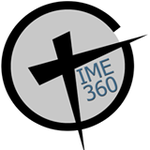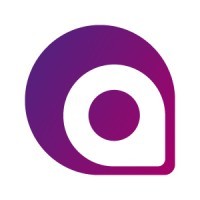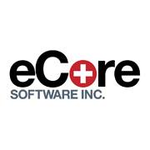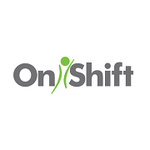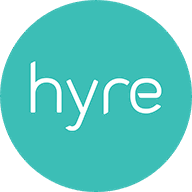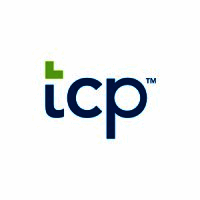What Is Employee Scheduling Software?
Employee scheduling software is an effective tool for simplifying and streamlining the process of developing and managing work schedules for employees. It eliminates the need for manual scheduling, spreadsheets, and documentation, saving firms both time and resources. Employers can use this program to generate schedules, allocate shifts, and track employee hours from one single spot. One of the primary benefits of staff scheduling software is its ability to automate the scheduling process.
This implies that the software can use criteria like staff availability, time off requests, and shift preferences to create a fair and balanced schedule for the entire team. This not only saves time for businesses, but also ensures that employees are scheduled according to their own needs and preferences. In addition to scheduling, staff scheduling software includes shift shifting, shift reminders, and real-time updates.
This improves communication between employers and employees and makes it easier to manage schedule changes and updates. Another benefit of employee scheduling software is the ability to measure and manage employee hours. The software can track clock-in and clock-out times, breaks, and overtime hours, allowing employers to better monitor and manage labor costs.
Furthermore, some employee scheduling software integrates with other HR and payroll systems, helping organizations streamline their overall HR management process. When looking to buy staff scheduling software, you should evaluate your company's specific demands and requirements. Some software may be tailored to specific industries or business sizes, so it is critical to select the software that best meets your needs.
What Are The Recent Trends In Employee Scheduling Software?
Employee scheduling software has become a must-have tool for businesses of all sizes looking to effectively manage their workers. With the ever-changing technological landscape, employee scheduling software has experienced major adjustments and improvements in recent years. Here are the main trends in employee scheduling software to consider while searching for the best option for your company.
1. Cloud Solutions Have Taken Control: One of the most significant changes in employee scheduling software is the transition to cloud-based solutions. This means that the software is housed on remote servers, allowing users to access it from anywhere with an internet connection. Cloud-based solutions have numerous benefits, including real-time updates, scalability, and cost-effectiveness, making them the favored option for many enterprises.
2. Mobile-Friendly Scheduling: With the rise of remote work and mobile devices, there is an increased demand for mobile-compatible staff scheduling software. This trend has resulted in the creation of mobile-friendly scheduling tools that enable employees to check their calendars, request time off, and exchange shifts while on the go, making the process more easy and efficient.
3. Advanced Scheduling Algorithms: Many modern workforce scheduling software creates efficient schedules using complex algorithms and artificial intelligence (AI). These algorithms analyze a variety of parameters, including employee availability, skills, and preferences, to generate balanced and equitable schedules that fulfill the needs of the business while also considering employee well-being.
4. Integrate With Other HR Systems: Another trend in employee scheduling software is the integration of other HR systems like payroll, time tracking, and performance management. This interface streamlines and automates the process, decreasing the need for manual data entry while enhancing accuracy.
5. Real-Time Communication And Updates: Effective communication is essential in employee scheduling, and recent innovations in scheduling software have centered on enhancing communication among team members and management. Many systems now provide real-time updates, automated notifications, and in-app messaging to ensure that everyone is on the same page and can respond swiftly to changes in the calendar.
6. Employee Self-Service Possibilities: Employee scheduling software now includes a self-service component, giving employees more control over their schedules. This trend allows employees to seek time off, switch shifts, and set their availability directly in the system, decreasing managers' administrative burden and increasing employee engagement in the scheduling process.
Benefits Of Using Employee Scheduling Software
Employee scheduling may be a challenging and time-consuming issue for any firm. Fortunately, technological improvements have resulted in a solution in the form of personnel scheduling software. This software is specifically developed to simplify the process of developing and managing staff schedules, with various advantages for both companies and workers. In this buyer's guide, we'll look at the main advantages of adopting staff scheduling software to help you make an informed purchasing decision.
1. Streamlined Scheduling Process: One of the most major advantages of adopting staff scheduling software is the more efficient scheduling procedure it provides. Traditional techniques for developing and managing timetables required manual labor and were prone to human error. However, scheduling software allows you to automate the entire process, making it more efficient and accurate. The program can also consider issues such as personnel availability, shift preferences, and labor laws, making the process easier for management.
2. Increased Employee Satisfaction: Employee scheduling software benefits the workers by enhancing job satisfaction. This software allows employees to examine their schedules in advance, track their shifts, request time off, and trade shifts with their coworkers. Employees benefit from this level of openness and control since it allows them more influence over their schedules. They can also quickly convey their availability and preferences, which can help them achieve a better work-life balance and job satisfaction.
3. Cost Savings: Using employee scheduling software might also help firms save money. Managers can use computerized scheduling to reduce overstaffing and understaffing, resulting in significant cost savings. The program is also compatible with payroll systems, making it easy to log staff hours and precisely calculate wages. Furthermore, the software eliminates the need to print and publish physical schedules, which reduces paper waste and associated costs.
4. Real-Time Updates: Another big advantage of employing employee scheduling software is real-time updates. Any modifications to the schedule, such as shift swaps or time-off requests, are reported in real time, allowing managers to stay on top of developments and make adjustments as needed. This functionality is especially valuable for firms with a large workforce or employees that work remotely or offsite.
5. Compliance With Labour Laws: Employers often find it difficult and time-consuming to comply with labor rules. However, staff scheduling software can help simplify this process by verifying that schedules comply with labor laws and regulations. The software can account for laws such as limit working hours and rest breaks, reducing the chance of noncompliance and any associated penalties.
Important Factors To Consider While Purchasing Employee Scheduling Software?
When it comes to organizing your employees' schedules, investing in the appropriate software can make a significant difference. Employee scheduling software can help you save time and money while increasing overall business efficiency. However, with so many options on the market, it might be difficult to find the best one for your personal requirements. To make an informed decision, here are some crucial considerations to consider when selecting employee scheduling software:
1. The First Consideration: when selecting staff scheduling software is the features and functionality it provides. Each software may have different features, so you must choose which ones are critical for your organization. Some fundamental features to look for are automated scheduling, shift shifting, time off requests, and smartphone accessibility. Depending on your sector and company requirements, you may also want to look into capabilities like job assignments, labor projections, and connectivity with payroll systems.
2. User-Friendly: The software you select should be simple to use for both you and your staff. A convoluted and confusing interface might slow down the scheduling process and cause errors. Look for software with an easy-to-use interface and intuitive functionality. You may also want to look at software that provides training and assistance to ensure a smooth transition for you and your staff.
3. Compatibility: Choose software that is compatible with your current systems and devices. If you use a specific operating system or tools, ensure sure the program you choose is compatible with those. This will save you time and effort when trying to integrate the new software into your existing operations.
4. Scalability: As your firm expands, so will your scheduling requirements. It is critical to choose software that can meet your future requirements. Look for scalable software that can accommodate an expansion in personnel numbers, locations, and scheduling requirements. This will spare you from having to switch to new software in the future.
5. Budget: Another crucial consideration is your budget. Employee scheduling software can cost anything from free to hundreds of dollars each month, so consider how much you are willing to invest. Remember that investing in high-quality software can save you both time and money in the long term.
6. Data Security: Because staff scheduling software stores sensitive data, it is critical to evaluate the security mechanisms in place. Look for software that has data encryption and safe access methods to protect your employees' information. You might also want to look into software that provides frequent backups and data recovery alternatives in case of a technical problem. By taking these crucial elements into account, you can select the best employee scheduling software for your business.
What Are The Key Features To Look For In Employee Scheduling Software?
Employee scheduling software is an essential tool for every firm that wants to streamline and optimize its labor management. With so many alternatives available on the market, it can be difficult to decide which software is ideal for your organization. To aid your decision-making process, these are the essential elements you should look for in employee scheduling software:
1. Intuitive Scheduling Interface: A user-friendly interface is essential for effective scheduling. Look for software that allows you to quickly create, amend, and allocate shifts with a few clicks.
2. Automated Scheduling: Manual scheduling is time demanding and error-prone. A good employee scheduling software should provide automatic scheduling features that include employee availability, talents, and preferences.
3. Real-Time Updates: Managers and staff must have access to current schedule information. Look for software that enables for fast changes and notifications, which improves communication and reduces confusion.
4. Employee Self-Service: Managers can save time by allowing staff to manage their own schedules. Look for software that allows employees to seek time off, swap shifts, and examine their schedules with ease.
5. Compliance With Labor Laws: Any business must follow labor laws and regulations. To ensure compliance, make sure the software you purchase includes capabilities like as overtime monitoring, break tracking, and labor law rule authoring.
6. Integration With Payroll: Payroll is a critical component of workforce management. Choose software that connects with your payroll system, easing the process and lowering the risk of errors.
7. Mobile Accessibility: With the development of remote work and the use of smartphones, having mobile-friendly scheduling software is becoming increasingly important. Look for software that has a mobile app or a responsive web design for convenient access on the go.
8. Analytics And Reporting: Access to data is critical for making sound judgments. Look for software that includes analytics and reporting options to help you track time and attendance, shift coverage, and extra expenditures.
9. Customization Options: Each organization has distinct scheduling requirements, and not all software may meet them. Choose software with customization possibilities to fit it to your company's specific requirements.
10. Customer Support: Finally, assess the level of customer assistance supplied by the software vendor. Look for organizations that provide dependable and responsive customer service to help you with any technical problems or questions.
Why Do Businesses Need Employee Scheduling Software?
Businesses of all sizes and industries rely largely on efficient and effective personnel scheduling to ensure seamless operations. With the growing complexity and problems of maintaining employee schedules, more businesses are turning to employee scheduling software as a solution. This technology not only simplifies the scheduling process, but it also provides a number of other advantages that can have a significant influence on a company's bottom line.
First and foremost, employee scheduling software saves time and resources. Traditional scheduling systems, such as spreadsheets or pen and paper, are time-consuming and prone to human mistake. Employee scheduling software allows managers to swiftly establish and alter schedules with a few clicks, saving hours of manual labor. This also decreases the possibility of double reservations or overlapping shifts, resulting in a more seamless and effective operation.
Furthermore, personnel scheduling software provides a significant degree of flexibility and customization. It enables managers to quickly assign shifts based on staff availability, skills, and seniority, resulting in fair and balanced schedules. This can increase employee happiness and assist to retain top personnel. Furthermore, the program may design schedules that adhere to labor rules and regulations, lowering the risk of noncompliance and related penalties for the organization.
Employee scheduling software also gives real-time information on staff availability and shift changes. This is especially handy for businesses with different locations or teams that operate remotely. Managers can easily make changes to schedules if a shift has to be covered or if an employee calls in sick.
This enables smooth operations and prevents any potential service outages. Another significant advantage of employee scheduling software is its interaction with payroll and time-tracking systems. This eliminates the need for manual entry and calculations, lowering the chance of errors and saving time for management. Furthermore, the program can provide data-driven insights into labor expenses and efficiency, enabling firms to make informed hiring decisions and optimize their personnel budgets.
How Much Time Is Required To Implement Employee Scheduling Software?
The time it takes to install employee scheduling software varies according to the program, the size of your firm, and your level of preparedness. In general, it can take anywhere from a few days to several weeks to fully deploy the software and get your scheduling system up and operating. To gain a better picture of the timeline for implementation, consider the following criteria.
First, the complexity and features of the software will influence the time required to get it up and operating. Some software may have a simpler interface and require less training, whilst others may have more complicated capabilities that take more effort to learn and configure. Second, the size of your firm will determine how long it takes to integrate the program.
Larger firms with more staff and locations may need more time to configure the system and ensure it is tailored to their specific requirements. Your level of preparedness is also an important consideration. If you already have a well-organized scheduling system and are just transferring to a new software, the transition may be simpler and easier.
However, if you are beginning from scratch or have a disorderly system, it may take longer to get everything in order and train your personnel on how to utilize the program successfully. It is critical to recognize that the time required for implementation should not be rushed. Take the time to properly set up and teach your personnel on the program to ensure a smooth transition and optimal efficiency.
What Is The Level Of Customization Available In Employee Scheduling Software?
When it comes to staff scheduling software, one of the most important elements to consider is the level of customization available. This refers to the software's capacity to adapt to the unique demands and requirements of a business or organization, rather than providing a one-size-fits-all solution. Some employee scheduling software provides limited customisation, allowing users to enter their own shift schedules, personnel information, and time off requests.
This can be handy for small businesses with basic scheduling requirements. On the other hand, more advanced employee scheduling software provides a high level of flexibility, including shift bidding, automated scheduling based on staff availability and expertise, and the opportunity to specify unique rules and qualifications for each shift. This sort of software is best suited for larger enterprises with extensive scheduling requirements.
Some employee scheduling software allows you to customize the user interface as well as the scheduling functionality. This means that organizations may modify the appearance and feel of the program to match their identity, creating a coherent experience for employees.
Overall, the level of flexibility offered in employee scheduling software has a significant impact on its utility and success for a company. Before making a purchase, buyers should carefully assess their individual scheduling requirements as well as the level of customization provided by various software solutions.
Which Industries Can Benefit The Most From Employee Scheduling Software?
Employee scheduling software is a strong tool that can help many sectors streamline their labor management procedures. This revolutionary system automates the process of establishing, managing, and tracking employee schedules, allowing organizations of all sizes to better manage their staff. Here are the top five industries that can significantly benefit from employee scheduling software:
1. Retail: In the fast-paced retail industry, where workers work a variety of shifts and schedules, a dependable and adaptable staff scheduling system is essential. Retail organizations may simply establish and amend schedules based on their staffing needs with employee scheduling software, as well as rapidly replace shift gaps or last-minute changes.
2. Healthcare: In the healthcare profession, where patient care is paramount, having an appropriate personnel schedule is critical. Employee scheduling software can assist healthcare facilities, such as hospitals and clinics, in creating schedules that comply with labor rules and regulations while maintaining enough staffing levels at all times.
3. Hospitality: In the highly competitive hospitality industry, where visitor pleasure is paramount, having a well-managed and structured team is essential. Employee scheduling software can help hotels, restaurants, and other hospitality organizations create effective schedules, ensure that all required shifts are covered, and reduce labor expenditures.
4. Manufacturing: In the manufacturing industry, where production schedules and deadlines are critical, maintaining an efficient and effective employee schedule is essential. Employee scheduling software can assist manufacturing organizations in scheduling their personnel depending on production demands, ensuring that their staff is aligned with production objectives.
5. Transportation: Creating and monitoring schedules in the transportation industry can be difficult because businesses operate around the clock and personnel work varied shifts. Employee scheduling software can assist transportation businesses in creating precise and effective schedules that ensure their personnel are available for their assigned shifts while following to employee working hour compliance standards.
Conclusion
Finally, selecting the best staff scheduling software for your organization is determined by a number of factors, including your budget, business size, and unique requirements. Before making a decision, make sure to properly assess the features, customer service, and convenience of usage. Cloud-based software provides greater flexibility and accessibility, whilst on-premise solutions provide more control and protection.
Additionally, bespoke software can be tailored to meet your specific scheduling needs. When comparing choices, take into account their integration possibilities with other HR and payroll systems, as well as the availability of mobile apps for on-the-go management. Other considerations include the onboarding process, training resources, and technical support offered by the software provider.
Finally, the correct personnel scheduling software will streamline your scheduling process, saving you time and effort while increasing overall efficiency and production. With increasing market rivalry, it is critical to conduct extensive research and consider all available possibilities before investing in a software solution. Hopefully, this buyer's guide has provided useful information and factors for making an informed decision.


